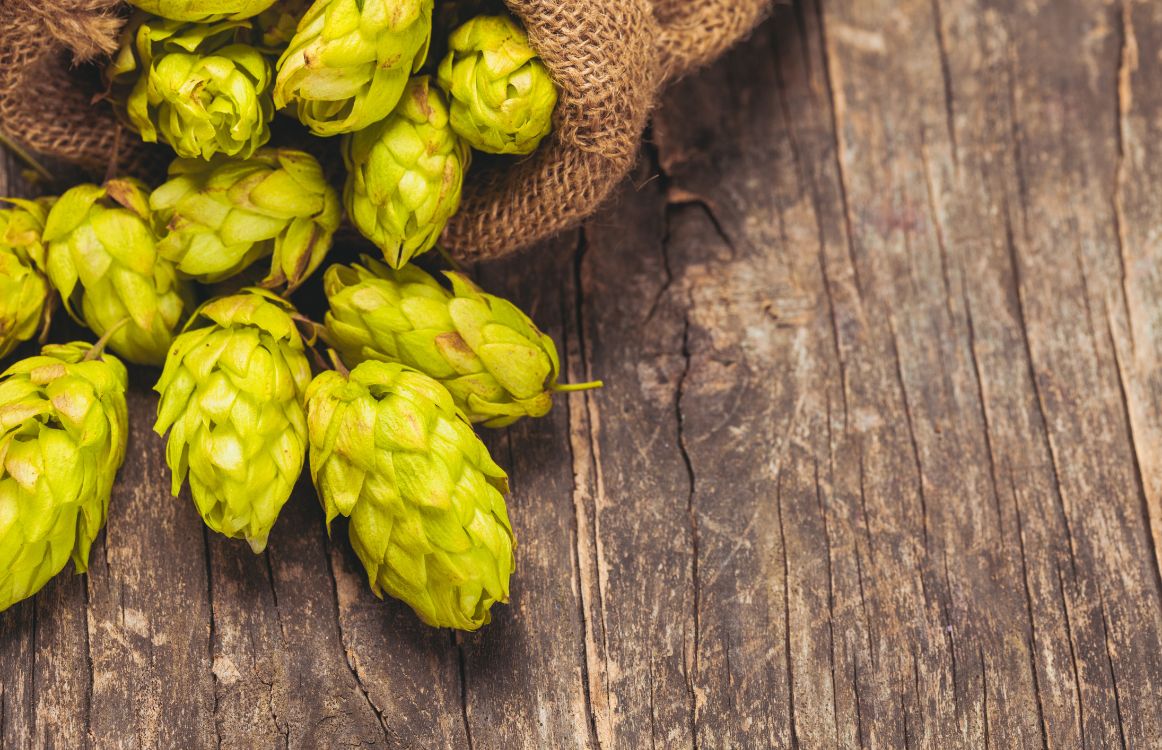Hop Varieties: Chart and Flavor Profiles
Long ago were the days of simply gathering a few herbs from the local forest, circling them with twine, and dropping them into your wort to add some bitterness and cut down on the sweetness of beer.
Today, the universally excepted herb for bittering in beer is hops.
But that does not mean the flavor profile is limited.
Far from it.
Today, brewers have almost 200 hundred hop varieties to choose from.
Here, we’ve gathered a massive list, separated into categories of bittering, aroma, and dual use, which addresses both bittering and aroma.

Bittering Hops
When you think of bittering hops, know that the primary purpose of the herb is to cut down sweetness. These hops will be used with high gravity beers that have started out sweeter than most beers, often including adjuncts like cane sugar.
Bittering hops are typically added once the wort has been collected in the kettle and after the boiling has begun. Often, bittering hops are then boiled for an additional 30 to 60 minutes.
Note also that bittering hops, when boiled, will become even more bitter, so expect International Bitterness Units (IBUs) to be on the higher end of the scale.
Aroma Hops
Aroma hops, in contrast, are used in beer when you actually want less bitterness, but you still want the herbal, floral, earthy factors. Some bittering hops will likely still be used, but the aroma hops will be heavier.
Because aromas in herbs burn or steam off quickly and turn bitter in hot liquid, aroma hops are generally added after the boil.
Beers heavier in aroma hops will come in much lower on the IBU scale.
Dual Purpose Hops
Dual purpose hops, as the name implies, serve both purposes, adding bitterness to beer as well as flavor and aroma.
In general, dual purpose hops can be added to the wort at any time during production, but, again, to stop the bitterness from becoming overwhelming and to preserve your aromas, you are better off adding dual purpose hops at the end of the boil or after the boil altogether.
With hundreds of hops varieties to choose from, it is a good idea to first decide what your purpose is, and then do a full investigation into each hop variety from there.
Much of your decision will likely have to do with how close you are to the plant as it is grown and harvested as you will want to use the herb almost immediately if you are wet hopping and withing 6 months if you are dry hopping.
Old hops can have a negative impact on the beer, bringing in funky, musty, or cheesy aromas and flavors.
As with most things brewing, you will want to experiment with which hops work best for your chosen ingredients and brewing process.
Cheers!
Are you still pitching fresh yeast every time? By reusing your yeast, you can save up to hundreds of thousands of dollars per year on just yeast alone!
Join the hundreds of brewers from all around the world using the Smartest Automated Yeast Cell Counter! Request a Free Demo Account today and experience firsthand how Oculyze can take your brewery to the next level!
Sources:
Stay on top on important fermentation insights – subscribe to our monthly newsletter and receive a hand-picked selection of our most relevant articles straight to your inbox.
Never miss a beat and get real time updates with a new article each workday by subscribing our social media channels.
Instagram | Facebook | Twitter | YouTube


